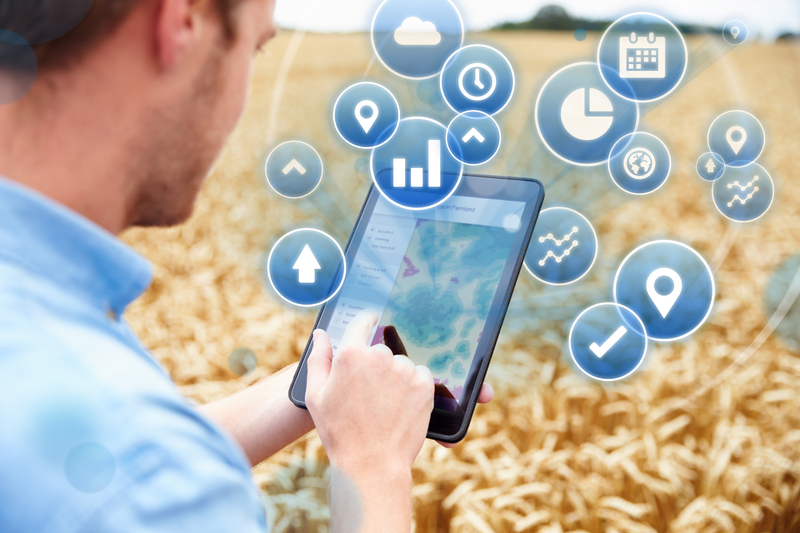Disruptions to the global agriculture value chains are more devastating than disruptions in other supply chains. Sometimes referred to as “soft commodity supply chains,” they are arguably the world’s most important supply chains because we know disruptions often lead to suffering and death. Journalist Jenny Messenger notes, “Soft commodity supply chains of all kinds will continue to face climate change-related turmoil this year, with the most obvious risks being extreme weather events like heatwaves, fires, flooding and drought, all of which cause low yields or crop failure.”[1] And, if climate change wasn’t enough to worry about, she reminds us, “For businesses in soft commodity supply chains, geopolitical risks and war continue to be highly disruptive.”
The most publicized conflict-related disruptions to the global agriculture value chain have been those associated with Russia’s unprovoked invasion of Ukraine. Messenger reports, “The Russian blockade of Ukrainian ports, physical damage to land and equipment caused by the war, and sanctions on Russian exports have significantly impacted agricultural supply chains.” The impact on the Ukrainian agricultural sector has been devastating. Vlada Magaletska, a former deputy minister of food and agriculture for Ukraine, and currently a senior advisor at Enterra Solutions®, told Messenger, “[The total damage of the war has] been more than US$2.5bn for the agricultural sector in [last year’s] summer months alone. … This includes the partial or full destruction of machinery, equipment, storage facilities, livestock, crop storage, as well as most inputs and outputs — all of which significantly affected the agricultural sector.” The most recent disaster affecting the Ukrainian agricultural sector was the destruction of the Kakhovka Dam. It will likely turn into an environmental catastrophe affecting food supplies, drinking water, and widespread ecosystems.
Efforts to help Ukrainian farmers sell their crops have raised new challenges. With maritime exports of grain continuing to be at risk, Ukrainian grain has been funneled landward into Eastern Europe. As a result, crop prices in Poland, Bulgaria, Hungary and Slovakia collapsed with the onslaught of cheaper imports — generating protests in those countries. In reaction to those protests, governments enacted unilateral bans on Ukrainian food imports. Journalist Matina Stevis-Gridneff reports, “The bans frustrated officials in Brussels and Kyiv, and illustrated how the E.U. tariff waiver, enacted last year to support Ukraine against Russia’s invasion, had created unintended consequences that threatened to disrupt the bloc’s united front on the war.”[2] To mollify farmers in those countries, the European Union is granting Eastern European farmers more than $100 million in aid. As part of the deal to remove the bans, Stevis-Gridneff reports, “Certain types of Ukrainian grains — among them wheat and sunflower seeds — will only be permitted to transit through those nations on their way to other destinations, and not to be sold there. Officials hope that this will soften the effects on farmers in Ukraine’s neighboring states.”
Food Security and Climate Change
As devastating as conflict can be on the global agriculture value chain, climate change is poised to wreak even greater havoc. Publicist Jeff Tyson notes, “Climate change is mounting widespread disruption on the planet — with the most marginalized people and vulnerable places the hardest hit — while severe, irreversible changes are still to come if the world does not do enough to curb warming and spark resiliency.”[3] Cornell University Professor Rachel Bezner Kerr, lead author of a 2022 United Nations’ Intergovernmental Panel on Climate Change (IPCC) report, says, “Our report provides robust evidence that climate change — including increases in climate hazards such as flooding, drought, or cyclones — is already affecting food systems, and particularly food security in vulnerable regions. … No one is spared, but some groups and regions are much more affected by climate change.”[4]
Here’s the rub: Food systems generate one-third of global greenhouse gas (GHG) emissions. And, as governments try to curb those emissions, the burdens placed on farmers are raising concerns that regulations will put them out of business — which would exacerbate global food security. Journalists April Roach, Tracy Withers, Jen Skerritt, and Agnieszka de Sousa report, “[To combat climate change,] some of the developed world’s agricultural powerhouses are unveiling bold new policies. … Politically, however, agriculture could prove trickier to tackle than sectors like mining, energy or cars, which are dominated by a small number of big, corporate players. Farmers are a force of millions, some with small holdings that have been in families for generations, giving them an attachment to land — and occupation — that runs deeper than profit. … Agriculture is a major export sector for many countries, but food is also a basic human need, and what we eat is often engrained in our heritage and sense of identity. It’s a more politically charged issue than many.”[5] The answer to this conundrum is to focus on better ways to manage soil, use water, and improve food production.
AI and Agriculture
Although artificial intelligence is not a silver bullet solution to agricultural sector problems, it can help. Freelance writer Saugat Bolakhe reports, “Plant pathologist Karen Garrett of the University of Florida, Gainesville, believes that artificial intelligence (AI) could be immensely valuable in fighting [crop] blights. If agriculture is equipped with cost-effective AI tools that can identify crop diseases and pest infestations early in their development, growers and others can catch problems before they take off and cause real damage.”[6] Garret told Bolakhe, “For crop resiliency, AI can help by making better tools for crop surveillance, designing better robots to deliver pesticides or harvest, and better software to help in breeding for traits like disease resistance and drought tolerance. It has a strong social angle, as it can help farmers and policymakers to make smart decisions.” The staff at FarmProgess lists five benefits AI can provide in the agricultural sector. They are:
1. Smarter machines. “We’re crossing the threshold to full autonomy where you get the machine where you want it, and send it out to do chores on its own. But more immediate benefits include smart systems using real-time input to make decisions to adjust combines during harvest as conditions change or run sprayers that shoot only weeds reducing chemical needs.”
2. Better equipment management. “Aggregated machine data can be used for predictive management when correlated with actual failures. … These onboard systems can be upgraded remotely as new, smarter programs become available helping keep the tech on that machine updated with the latest efficiencies.”
3. Improving crops. “Machine learning is hard at work with plant breeders and crop protection companies. Seed companies have pumped their genetic data into these machine learning systems. … Plant breeders can tell you, with some confidence, how pairing two corn inbreds will work out in the resulting hybrid long before planting. … For crop protection companies, these intelligent systems are helping find new chemical molecules or biological controls that are more precise with greater results while reducing the environmental impact.”
4. Enhancing production. “Once those finely tuned hybrids and varieties are available to the market, smarter systems are helping better match them more precisely to your farm. … Today, … choices are targeted to very specific markets based on weather, soil and other local conditions. And companies are exploring how specific hybrids and varieties respond to different management techniques.”
5. Revealing the unknowns. “Even after thousands of years of farming, there are still issues we know little about. That knowledge is growing whether it’s how the microbiome where a plant lives interacts with roots, or a better understanding of how terrain impacts autonomous systems. It’s machine learning and artificial intelligence, fully deployed in agriculture, that will light the way.”
Concluding Thoughts
Although AI holds great potential for improving the agricultural sector and enhancing the global agriculture value chain, challenges remain. One example is cost. Garret notes, “There can be a lot of tools that do what you want them to do, but is the benefit that they bring big enough that it’s worth the cost investment? I think there are a lot of AI tools that are already useful, but they might not be profitable for farmers yet.” Another concern is cybersecurity. An article from the University of Cambridge notes, “Imagine a field of wheat that extends to the horizon, being grown for flour that will be made into bread to feed cities’ worth of people. Imagine that all authority for tilling, planting, fertilizing, monitoring, and harvesting this field has been delegated to artificial intelligence: algorithms that control drip-irrigation systems, self-driving tractors, and combine harvesters, clever enough to respond to the weather and the exact needs of the crop. Then imagine a hacker messes things up.”[7] The article continues, “A new risk analysis, published recently in the journal Nature Machine Intelligence, warns that the future use of artificial intelligence in agriculture comes with substantial potential risks for farms, farmers, and food security that are poorly understood and under-appreciated.” In the long-run, the benefits of AI will outweigh the risks. Nevertheless, care needs to be taken as the world moves to protect its global agriculture value chain, including cybersecurity risks.
Footnotes
[1] Jenny Messenger, “Chain Reactions,” Global Trade Review, 16 January 2023.
[2] Matina Stevis-Gridneff, “E.U. Extends Tariff Waiver for Ukrainian Grain, Despite Some Protests,” The New York Times, 28 April 2023.
[3] Jeff Tyson, “‘Rapidly closing window to act’ as climate change disrupts food systems,” Cornell University News Wise, 28 February 2022.
[4] Ibid.
[5] April Roach, Tracy Withers, Jen Skerritt and Agnieszka de Sousa, “Rebel Farmers Are Pushing Back on Climate Action. This is Why,” Bloomberg, 9 December 2022.
[6] Saugat Bolakhe, “AI for better crops,” Knowable Magazine, 17 January 2023.
[7] University of Cambridge, “Researchers Warn: Risks of Using AI To Grow Our Food Are Substantial and Must Not Be Ignored,” SciTechDaily, 20 March 2022.





